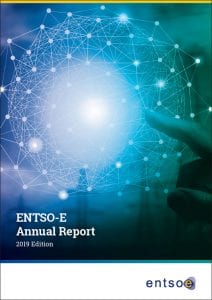Research, Development and Innovation
Research, Development and Innovation Roadmap
ENTSO-E strongly supports the aim of the Mission Innovation initiative to double the involved governments’ clean technology and research funding by 2021 and has reached out to policy makers, together with EDSO for smart grids, with Six Recommendations of Innovation to deliver the Energy Union.
ENTSO-E promotes and coordinates TSOs’ innovation activities to transform the European energy system into an integrated one, with an emphasis on flexibility (including demand-side response, storage, etc.) and end-to-end digitisation to integrate different technologies and market services.
ENTSO-E advocates for the dissemination and sharing of best practices of RDI through its business coalition platform, named “Business Network for Innovation”. In 2019, innovative business players, start-ups and thought leaders from academia and industry were invited to exchange their views in seven webinars on different topics related to European energy transition (e.g. storage, dynamic line rating, artificial intelligence and satellite technology, flexibility, etc.).
In addition, ENTSO-E organised on 13–14 May 2019, jointly with E.DSO, the InnoGrid2020+ conference centred around “Connecting Physics and Digits: Power Platforms on the Rise”. The conference brought together more than 400 participants from the industry, associations, EU institutions, regulators, academic world and Member States, who discussed how to ensure that digitalisation delivers all its potential value to European citizens and how to ensure it leads to the best possible TSO–DSO interaction. Innovative TSO and DSO projects were showcased under four technical areas:
- new technologies and grid planning,
- active customer, active system management,
- sector coupling and storage and
- advanced grids resilience.
In 2019, ENTSO-E began to develop its new RDI Roadmap for the period of 2020–2030, outlining the methodology that contributes to achieving the European climate energy objectives and in line with the European Commission’s Roadmap 2050. The development was led by the RDI Committee of ENTSO-E which initiated a major reprioritisation process to provide an updated basis for the Roadmap 2020–2030, to be aligned with European Green Deal, the new energy policy framework of the European Commission.
As a major step of the Roadmap preparation, RDI Committee began to work on a new RDI strategy of ENTSO-E. In light of the changing environment in which the TSOs operate, RDI Committee took a different approach, which is based on use cases and European flagship projects. The new RDI strategy identified three priority areas:
In addition, ENTSO-E strengthened its role in the European Technology Innovation Platform on Smart Networks Energy Transition (ETIP SNET), through active participation in its working groups and the Governing Board, of which ENTSO-E holds the chairmanship. ENTSO-E is also engaged in the integrated ETIP SNET 2050 vision of the energy system and will contribute to its 2020–2030 Roadmap and the further development of RDI building blocks.
One additional project was formed within the Horizon2020 framework, in which the “OneNet” consortium – including ENTSO-E and 14 TSOs – could develop further the TSO–DSO-prosumer cooperation and thus flexibility markets should the proposal be awarded funding by the European Commission.
Download
ENTSO-E Annual Report 2019
This Annual Report covers the period from January to December 2019. It focuses on the legal mandates given to ENTSO-E. Activities covered in this report have been performed thanks to the 42 members of ENTSO-E who provide its financial resources and whose staff provides expertise to the Association.
Chapters:
- System Operation
- Market
- System Development
- Transparency Regulation
- Research, Development and Innovation
- Cybersecurity, Interoperability and Data
- TSO–DSO partnership and demand side flexibility





